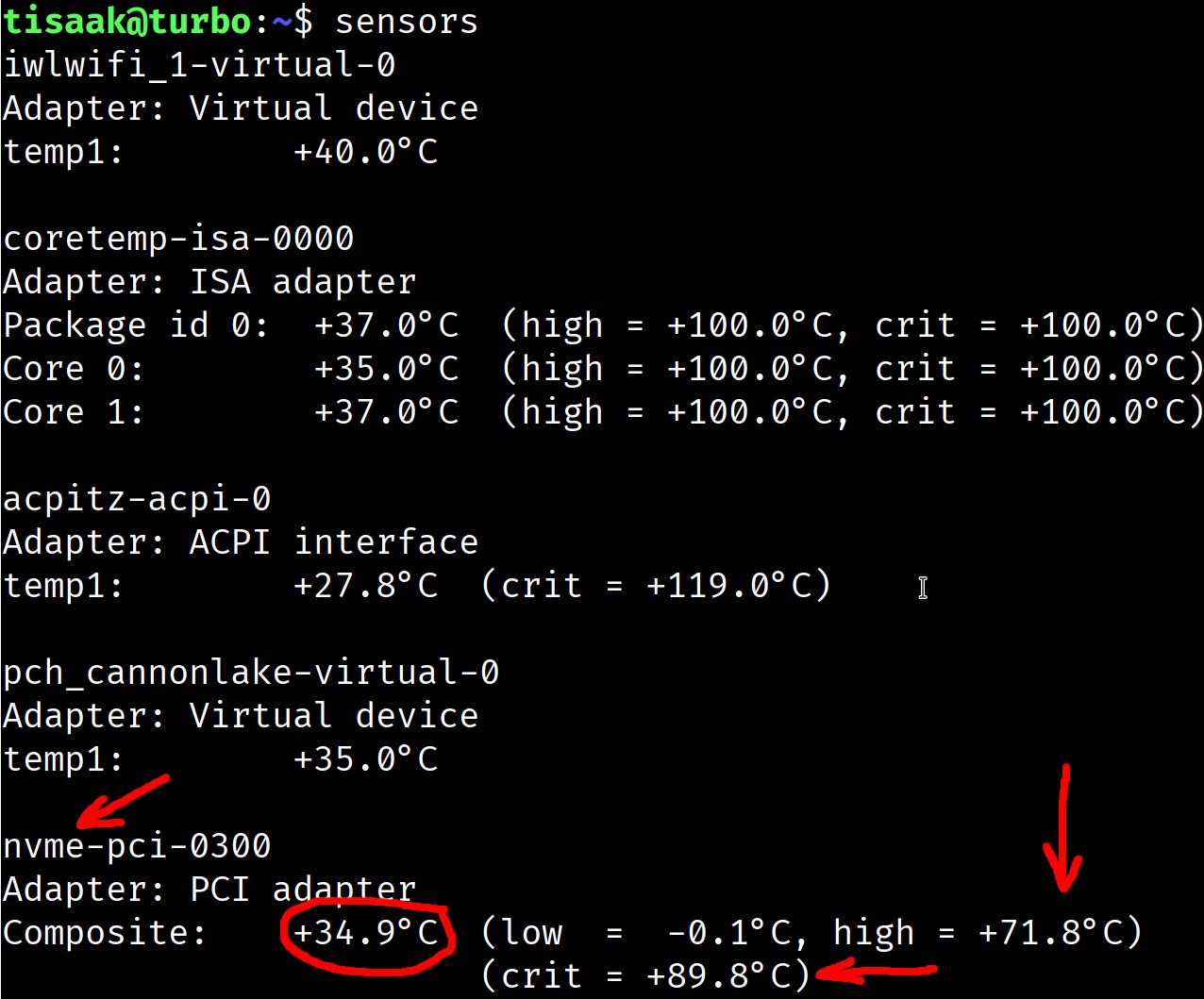Public Service Announcement: cool down your NVMe drives! Especially if they are installed in “Tiny Form Factor” PCs (aka “1 liter” cases).
How do I know? From own experience resulting from a lack of forethought.
My main work machine is a Lenovo ThinkCentre Tiny M630e that runs 24/7, drawing approx. 16 W from the wall while serving as my “dev server”. Around that time one year ago I moved my Debian/testing installation onto a 500 GB Exceria NVMe SSD by KIOXIA Group.
Due to the form factor of the PC the M.2 slot for an NVMe drive is found on the rear side of the motherboard and is supposed to be cooled passively. So, when you place the PC horizontally on the desk, the NVMe its sandwiched between the motherboard and the case wall, which itself makes another air sandwich with the wooden surface of the desk.
(Surprise! This passive cooling would have been facilitated by a heat-conductive pad between the NVMe’s chips and the metal case of the tiny PC.)
Roughly one month after installation, at the peak of the Greek summer, on August 16th, the NVMe failed suddenly and catastrophically.
No, it didn’t “burn out”. Air is a good insulator. The NVMe drowned in its own heat that, in a room with ambient temperature of 35°C, could only escape pretty badly.
The NVMe continued to register itself with the Linux kernel. However, it was otherwise unresponsive. It had tripped its maximum temperature and locked up, making all its data unavailable, and unrecoverable. This was new to me. No graceful degradation. Very digital! :) One moment it was accessible. The next, it wasn’t.
Solution: I replaced the NVMe and placed the PC on a laptop base with a spinning fan. The convective cooling from the fan cools down the case, primarily, and this acts like a heat sink. A tiny bit of air possibly enters the case through the slight perforation of its exterior. The entire PC feels cool to the touch.
Results? Shown below, from an SSH session. This is right now, in a currently non-airconditioned office with an ambient temperature of at least 32°C.
Overall, putting the PC on a laptop base sounds fitting. The Pentium Gold 5405U is, after all, a laptop CPU.
Screenshot



